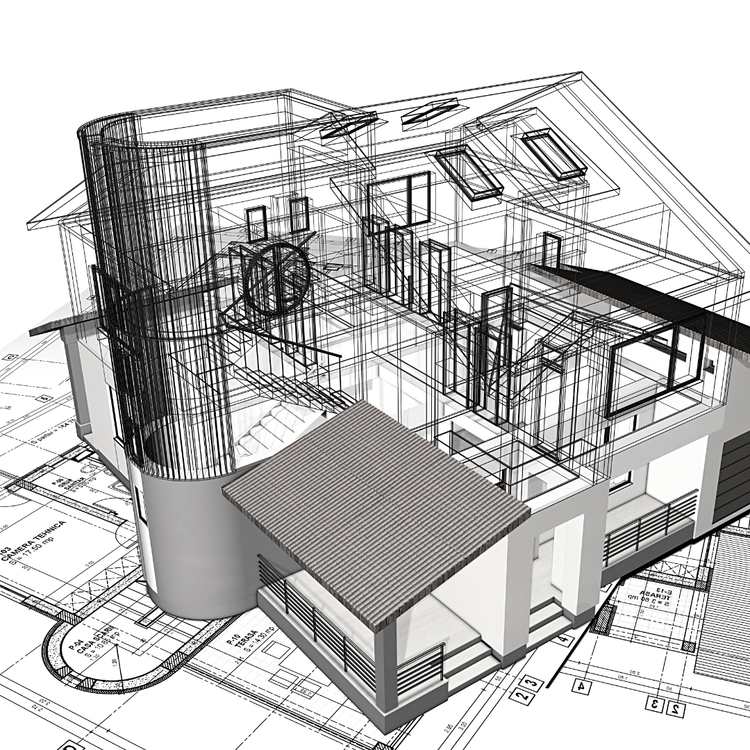The National Construction Code: Changes you need to be aware of for your home renovation or new home build
If you're planning a home renovation or a knock down rebuild project, The National Construction Code (NCC) needs to be on your radar.
The NCC is an important regulatory framework that governs the minimum design, construction, and performance of buildings and drainage throughout Australia. Volumes One and Two of the National Construction Code combine to create the Building Code of Australia (BCA), which contains specific provisions around home renovation or new home build design and construction.
In this article, we take a look at the recent changes to the NCC that may have a major impact on your home renovation or new home build project.
The National Construction Code changes explained
The most recent update to the National Construction Code saw a variety of changes being adopted by Australian states and territories on May 1, 2023, including an improved referencing system across all three volumes of the NCC. These changes primarily impact the existing energy efficiency requirements, as well as the liveable housing design requirements and included a wide range of revisions, such as:
Bushfire Safety Improvements
For homeowners considering renovations or new builds in bushfire-prone areas, the updated NCC has a profound impact. The stricter standards for bushfire safety, such as requirements for specific building materials and methods of construction to be used for windows, doors and walls, now play a pivotal role in the design of and budget for your project.
If you're building from scratch, the new NCC ensures that your structure will be better equipped to withstand the threat of bushfires. For renovations, it's an opportunity to fortify your existing property against future risks. However, it's important to understand that these enhancements may increase construction costs, so you need to plan your budget accordingly to align with these requirements.
Improved Energy Efficiency
The NCC's recent changes have a particular emphasis on energy efficiency requirements and the management of condensation. The changes in insulation, lighting, heating, cooling, and hot water systems are not only environmentally friendly, but are also intended to lead to long-term savings on energy bills.
If you're renovating, consider upgrading your home's insulation, windows, and heating and cooling systems to meet the new NCC standards. For those building new homes, it's an opportunity to create an energy-efficient living space right from the start. While the initial investment may likely be slightly higher, the changes are designed to deliver long-term benefits such as reduced energy bills and an uplift in the overall market value of your home.
Water Efficiency Standards
Water conservation is a significant concern in Australia and the NCC's stringent water efficiency standards are in place to address this issue. The recent changes include a particular focus on increased waterproofing and weatherproofing requirements. There are updated standards for plumbing fixtures and fittings in new homes, with recommendations for home renovators to upgrade their toilets, taps, and showers to meet these same standards (which are all also intended to help lower water bills).
Safer Pool Fencing
For homeowners with a pool, the NCC's updated regulations on pool safety are a key factor, having been designed to further enhance home pool safety and even further lower the risk of drowning incidents.
The NCC includes updated requirements regarding pool fence height and barrier integrity, non-climbable zones, self-closing and self-latching gates, and adequate signage. Whether you are renovating your pool or putting in a new pool, you will need to ensure that your pool complies with the new NCC requirements.
Updated Climate Zone Maps and Better Resilience Against Extreme Weather Events
The NCC has updated its climate zone maps to help guide designers and builders to produce homes that are comfortable and energy-efficient for each specific climatic region.
In addition to this, the NCC has included changes to combat Australia’s extreme weather events like cyclones and floods. This includes the addition of wind-resistant roofing, structural integrity requirements, and flood management strategies in an effort to reduce the impact these events have on Australian homes and residents.
New requirements to facilitate the future installation of electric vehicle charging infrastructure.
The NCC changes concerning EV charging infrastructure emphasises flexibility. They allow homeowners to choose between different options for EV charging, including dedicated charging stations or easily upgradable electrical circuits. This flexibility accommodates a variety of EV charging needs.
Homeowners planning renovations can work with electricians to determine the best approach for their individual circumstances. Whether you opt for a dedicated charging station or a future-proof electrical setup, the NCC gives you choices to suit your requirements and budget.
Together, these National Construction Code changes impact various aspects of all future home design and construction projects and are essential knowledge for anyone embarking on a home project of their own.
The impact of these National Construction Code changes
As important as these NCC changes are to both understand and, ultimately, follow, the updates will have both positive and negative impacts.
On one hand, the recent changes to the National Construction Code prioritise safety, energy efficiency, and sustainability. This means that your new home will be comfortable and environmentally friendly and that you will likely enjoy lower running costs and an increased market value of your home over the long term.
However, in the short term, these enhancements may come at a substantial extra cost, increasing the amount that you, or your builder, may otherwise have spent on fixtures, fittings and other materials. The changes to the NCC are also fairly complex, which makes meeting every compliance requirement a difficult endeavour and one which is best understood with a professional by your side.
How to address these changes
For consumers planning renovations or new builds, it's essential to recognise that the NCC is a dynamic document that changes to keep pace with industry and environmental standards and practices. Staying compliant with these evolving standards is vital, not only for legal reasons, but also for the safety and long-term value of your property.
To navigate these complex National Construction Code (NCC) changes successfully, it’s advisable to work with a registered and experienced architect and properly licensed builder who can demonstrate a profound understanding and execution of the code, specifically the Building Code of Australia (BCA). They can collaborate with you to develop a home design that minimises the impact on your overall budget and time constraints, while still meeting the recent regulatory changes and stringent requirements, to protect your investment and assure the longevity of your new home.
Work with an experienced architect and builder to navigate the recent changes to the NCC and BCA
As a Registered Architect and Licensed Builder, MILEHAM will play a pivotal role in ensuring your project aligns with the new NCC requirements, whilst minimising the impact on your overall budget and timeline.
Because we are also a licensed builder, we are able to offer our clients build cost estimations during the design phase before you go to approval, to help you navigate the NCC and BCA changes effectively.
Book your free consultation today so that we can discuss how to build the house of your dreams that meets both NCC and BCA requirements, and your design vision.



